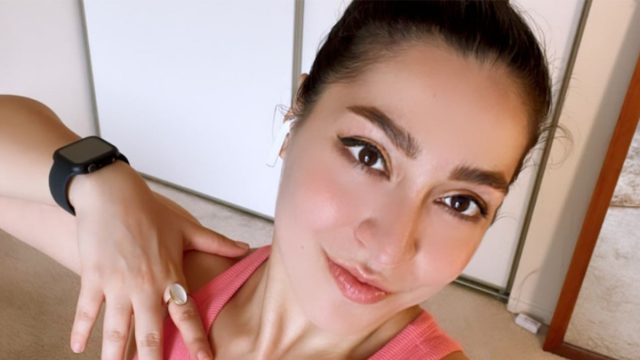She Lost 20 Pounds in 3 Months with These 8 Simple Hacks

Are you trying to lose weight but need some tips? Mahtab Ekay is a fat loss coach and social media influencer who lost over 20 pounds and helps others do the same. In a new Instagram post, she reveals some of her weight loss secrets. "8 calorie deficit tips you need to know if you are going to be successful with losing weight," she writes in the video. "I have lost 20 pounds in less than 3 months, and here are my top 8 tips that will help you get better results easier and faster."
Amp Up Your Fiber Intake
Her first tip is to eat at least 20-25g of fiber every day. "Fiber helps keep you satiated and aids in digestion. Include foods like fruits (apples, berries), vegetables (broccoli, carrots), legumes (beans, lentils), and whole grains (oats, quinoa) in your diet," she writes.
Drink at least Half Your Weight in Pounds in Ounces of Water
https://www.instagram.com/reel/DFcE07fx5KG/?utm_source=ig_embed&utm_campaign=loading
Next, she recommends drinking at least half your body weight in pounds in ounces of water daily, or "ideally" two-third of her weight. "Staying hydrated is crucial for overall health and can help control hunger. For example, if you weigh 150 pounds, aim to drink 75 ounces of water daily," she writes.
Eat 0.8 Grams of Protein Per Pound of Ideal Body Weight
Next, eat 0.8g of protein per pound of your ideal body weight. "Protein keeps you full longer and helps preserve and build muscle mass, which is essential for a toned, strong look. Include protein sources like chicken, fish, eggs, tofu, and legumes in your meals," she says.
Gradually Increase Your Daily Steps
Next, amp up your steps! "Aim to consistently hit 8,000-12,000 steps every day. Start with small goals and increase your steps over time to boost your overall activity level," she writes.
Lift Weights
Strength training is also key. She recommends lifting weights 3 to 5 times a week. "Weight lifting yields better results when following a structured program focused on progressive overload. This means gradually increasing the weights you lift to continuously challenge your muscles," she writes.
RELATED: 15 Quick Ways to Lose Body Fat Percentage in a Week
Incorporate Low-Calorie, High-Volume Foods
She also recommends incorporating low-calorie, high-volume foods into your diet. "Foods like popcorn, strawberries, and other berries are high in nutrition and low in calories. They help you feel full without consuming too many calories," she writes.
Stop Snacking
Next, stop snacking. "Have sweets or treats as dessert after your main meals to help control cravings. This strategy helps prevent mindless snacking throughout the day," she says.
RELATED: 8 High-Protein Foods with Nearly Zero Calories That Melt Fat.
Sleep More Than 6 Hours
Her last tip is to sleep more than 6 hours. "This is one of the most underrated tips. Sleep deficiency can disrupt hunger hormones, making it harder to stay in a calorie deficit due to increased cravings and potential binge eating. Aim for at least 7-9 hours of quality sleep each night," she says. And if you enjoyed this article, don't miss I'm a Nutritionist and Here Are 25 Weight Loss Truths You Need to Hear.




